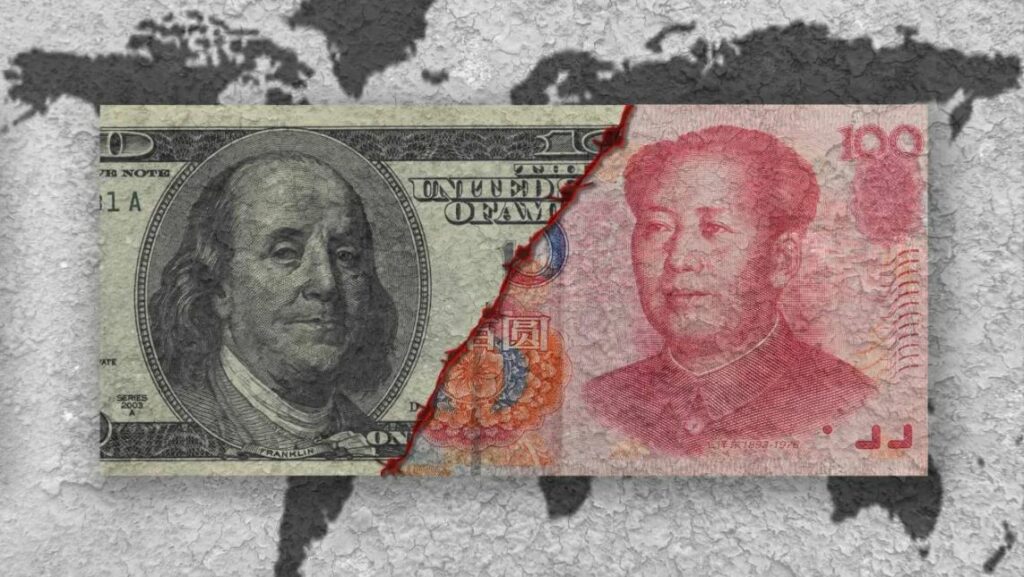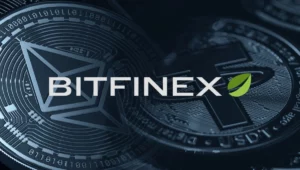
U.S. futures climbed on Sunday evening, lifted by renewed optimism over U.S.-China trade negotiations. However, cryptocurrency markets moved in the opposite direction, retreating amid ongoing uncertainty and a shift in investor risk appetite.
The White House said the recent round of talks with China had made “substantial progress,” which helped boost investor confidence. However, with few concrete details shared so far, the crypto sector reacted with caution.

Strong Gains in U.S. Futures
Following the announcement, all three major U.S. stock index futures posted notable gains:
- Dow Jones futures rose 1.3%
- S&P 500 futures increased by 1.4%
- Nasdaq 100 futures jumped 1.6%
These gains came after U.S. Treasury Secretary Scott Bessent and U.S. Trade Representative Jamieson Greer concluded two days of closed-door meetings in Switzerland with senior Chinese officials. Both officials described the talks as “productive” and “constructive,” emphasizing that the two sides had made meaningful progress.
“We made substantial progress between the U.S. and China in the very important trade talks,” Bessent said on Sunday. He added that more details would be released on Monday.
Greer echoed this sentiment, highlighting the unexpectedly rapid pace of the discussions. “It’s important to understand how quickly we were able to come to an agreement,” he said. This, he suggested, reflected a narrower gap between the two sides than previously assumed.
Trade Deficit and Tariff Pressures
Greer also brought attention to the United States’ $1.2 trillion trade deficit, saying that the current progress in negotiations marked a significant step toward addressing a long-standing problem. Former President Donald Trump had once referred to the trade gap as a “national emergency,” highlighting its geopolitical and economic importance.
As of mid-May 2025, the U.S. still maintains a 145% tariff on most Chinese imports. China, in turn, has imposed retaliatory duties of up to 125% on American goods. These steep tariffs were introduced in recent years in response to perceived trade imbalances and national security risks, including concerns linked to the opioid epidemic.
Despite the heavy tariff regime, both sides now appear open to dialogue. The improved tone may also reflect domestic pressures within China. Over the weekend, new economic data showed consumer prices in China dropped 0.1% year-on-year in April, marking the third straight month of deflation.
This downward trend in prices is a sign of weak consumer demand and may increase expectations that the People’s Bank of China will introduce additional stimulus measures to support the country’s slowing economy.
Markets Await More Specifics
While the tone from the U.S. officials was positive, the markets, including U.S. Futures, were left waiting for hard details. As of Sunday evening, there were no specific announcements regarding tariff reductions, negotiation timelines, or any enforcement mechanisms.
A joint statement from the White House is expected on Monday, which may shed more light on the exact nature of the progress made during the weekend talks.
Until then, market sentiment remains mixed, bullish in equities and U.S. Futures, but cautious in riskier assets like cryptocurrencies.
Crypto Markets Pull Back on Uncertainty
In contrast to U.S. Futures, the cryptocurrency market experienced a sell-off. Prices declined across major tokens amid the vague trade news and continued ETF outflows.
- Bitcoin dropped 0.6%, trading at $103,900
- Ethereum fell 2.9%, down to $2,507
- Popular altcoins such as Solana, Dogecoin, and XRP posted even sharper losses, declining between 4% and 8%, according to data from CoinGecko.
Analysts say the fall was driven by several factors, including liquidations triggered by falling prices and reduced investor appetite for risk. With no firm update from the U.S.-China talks and continued macroeconomic uncertainty, many traders pulled back.
The lack of detail from U.S. officials also disappointed some crypto investors who had hoped the talks might lead to reduced global financial tensions, which could in turn support risk-on markets and stabilize U.S. Futures as well.

What’s Next?
Investors now turn their focus to Monday’s expected joint statement from the White House. This update is likely to include more specific information on tariff plans, negotiation goals, and possible timelines for future meetings.
If the details confirm meaningful progress, equity markets and U.S. Futures may extend their rally. On the other hand, continued vagueness or a lack of follow-through could lead to renewed volatility across asset classes.
Cryptocurrency markets, in particular, will be watching closely. With prices already under pressure from other macroeconomic forces, such as inflation, interest rate expectations, and regulatory changes, clarity on U.S.-China relations could play a key role in short-term sentiment.
Conclusion
The weekend’s developments suggest a possible thaw in U.S.-China trade tensions. U.S. Futures reacted positively, with all major indices gaining over 1%. However, crypto investors took a more cautious stance, pushing prices lower as they waited for more details.
The ball is now in the White House’s court. If Monday’s announcement offers real clarity, it could spark a broader market rally. Until then, uncertainty remains the name of the game.























